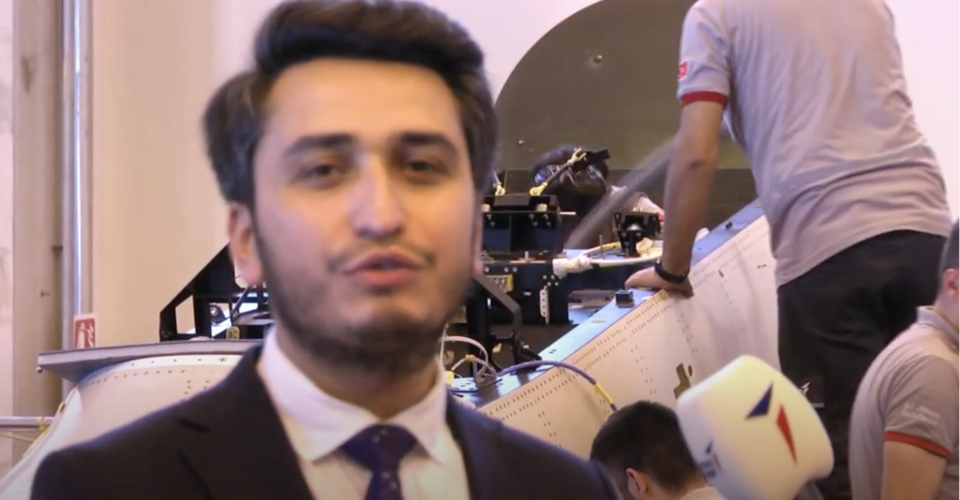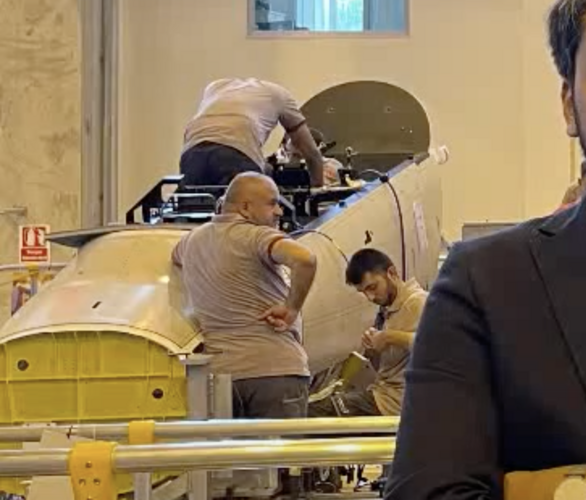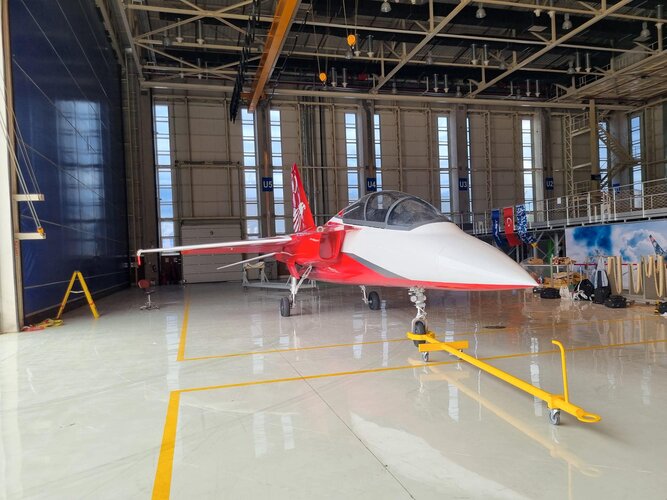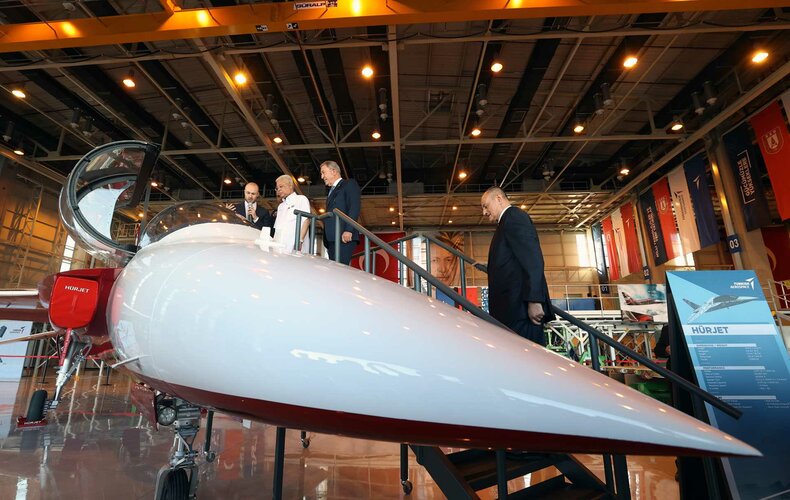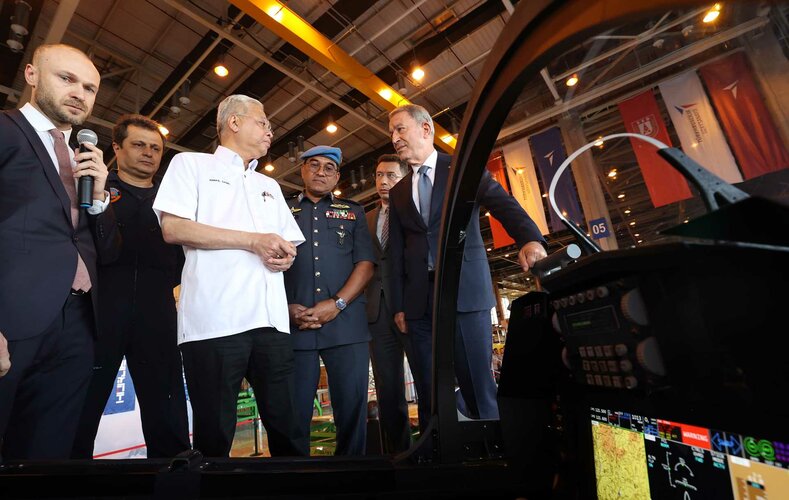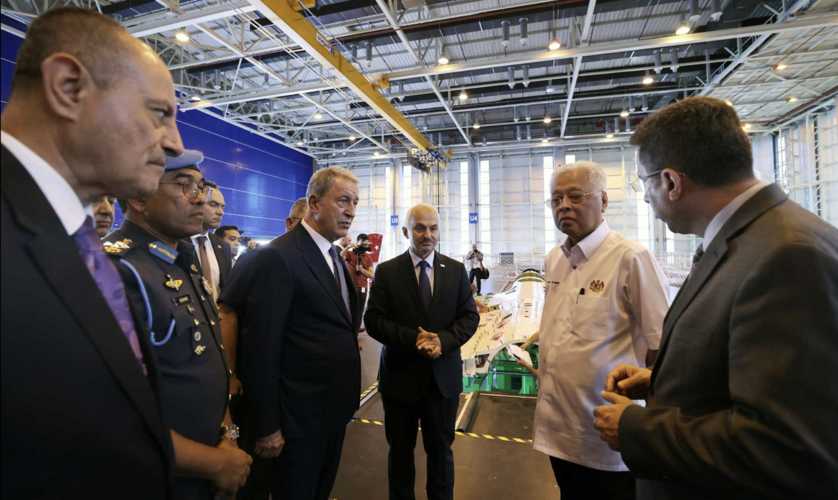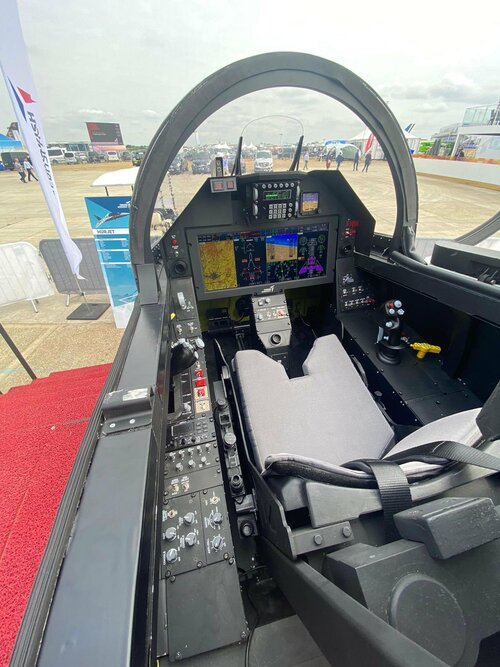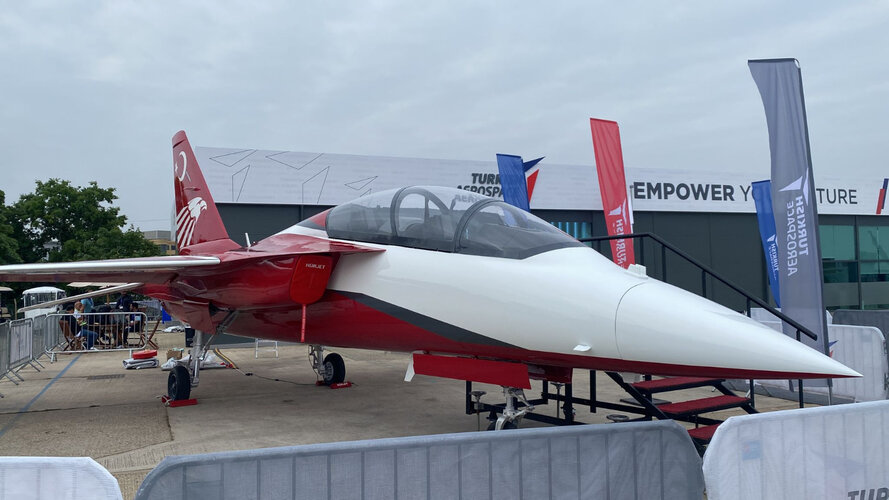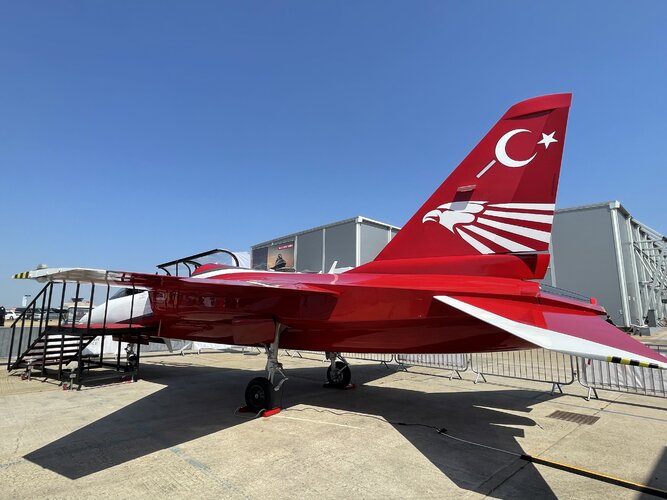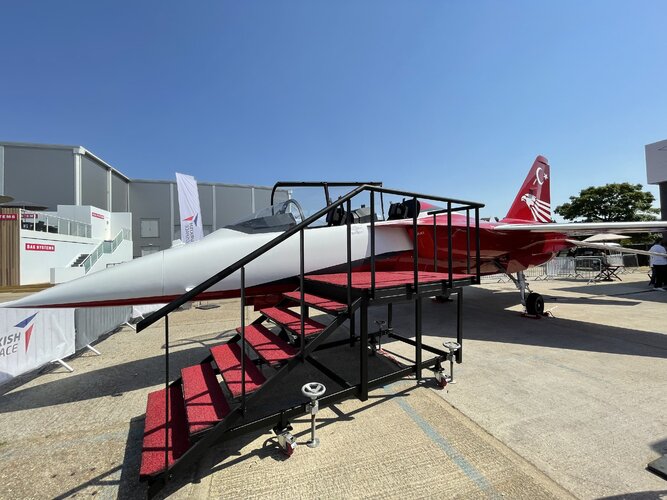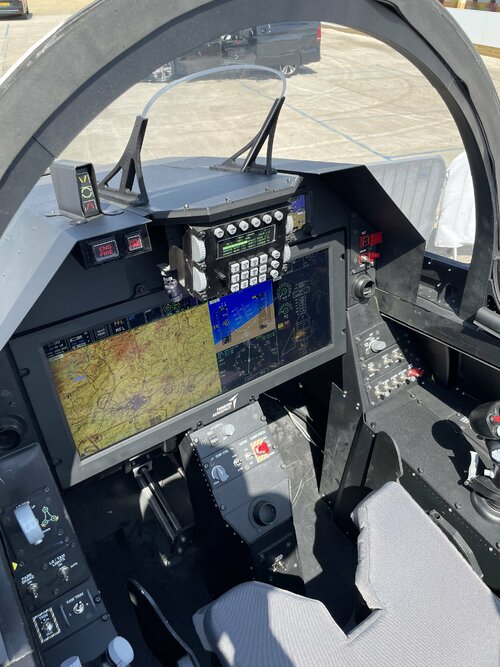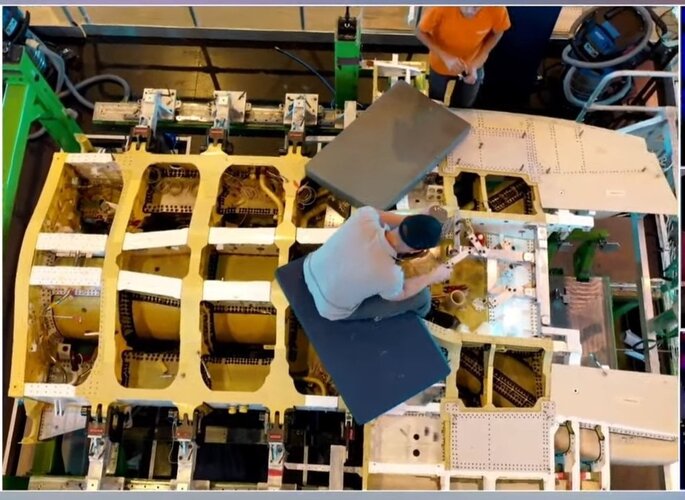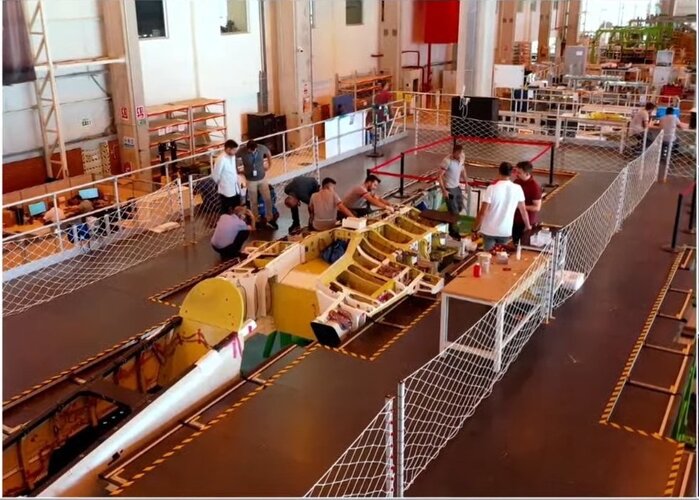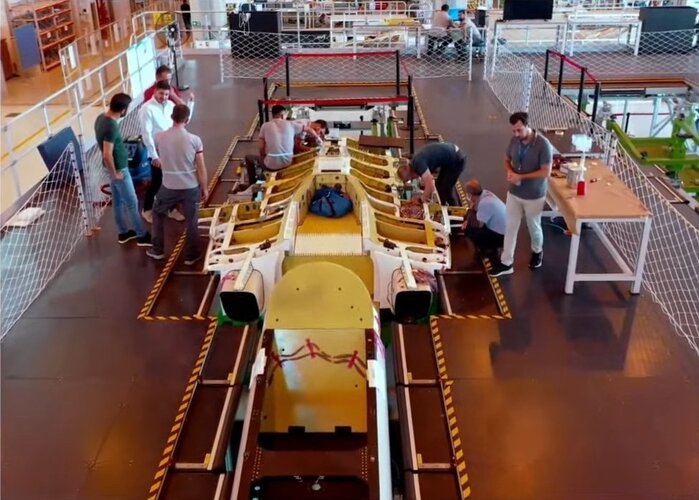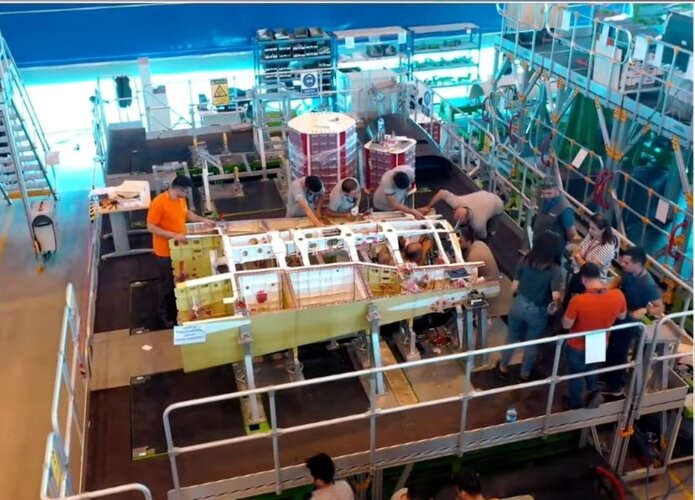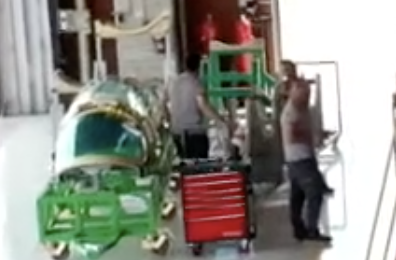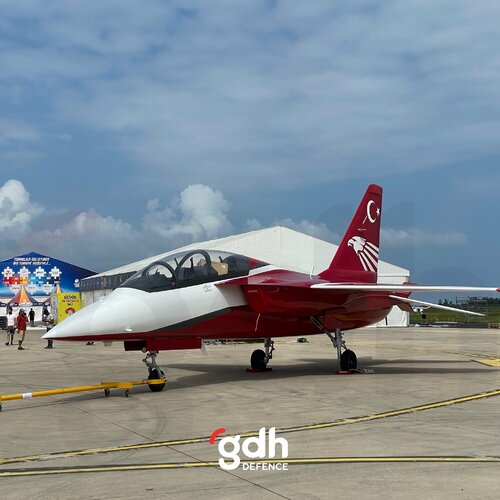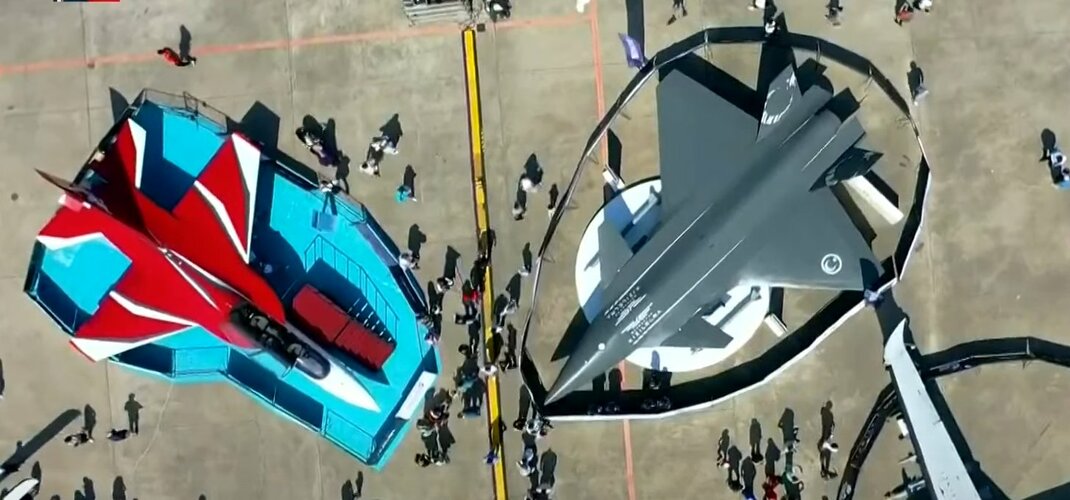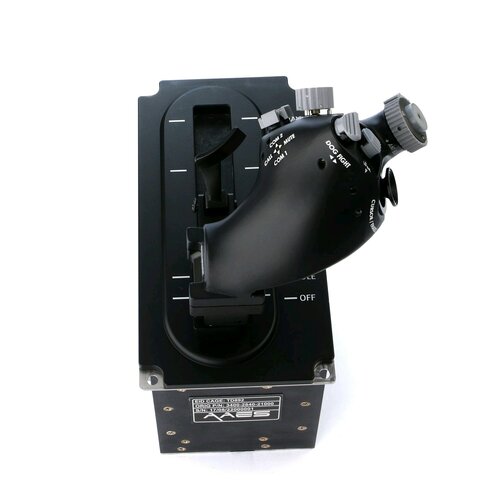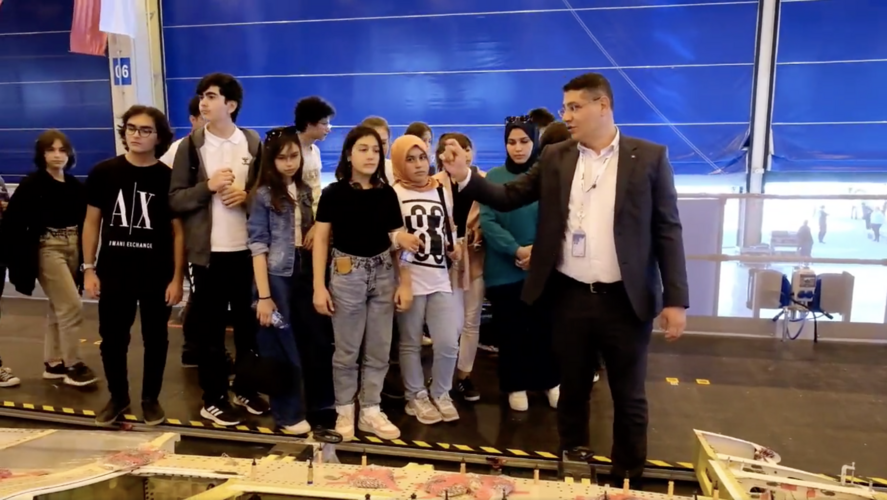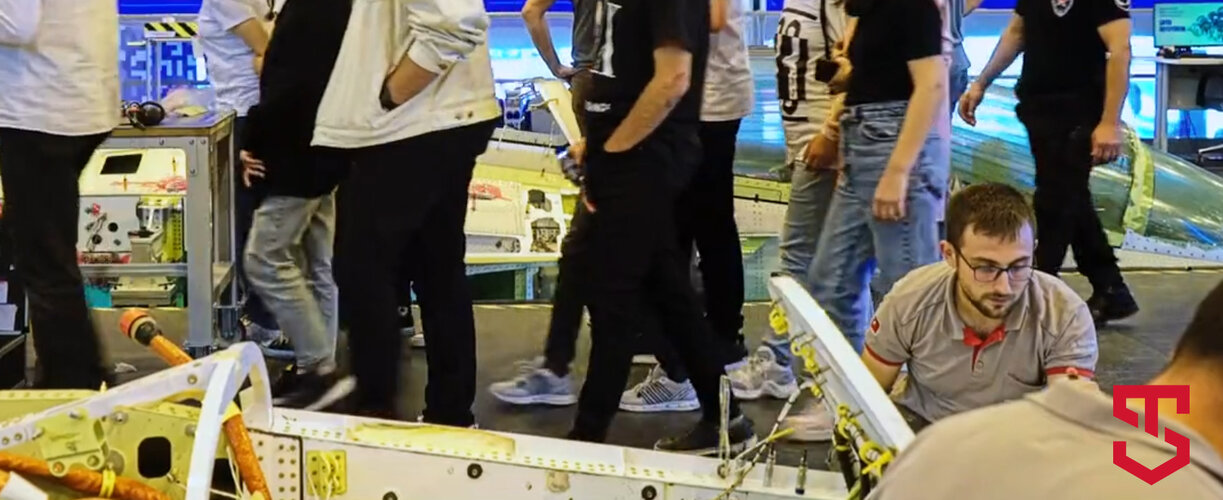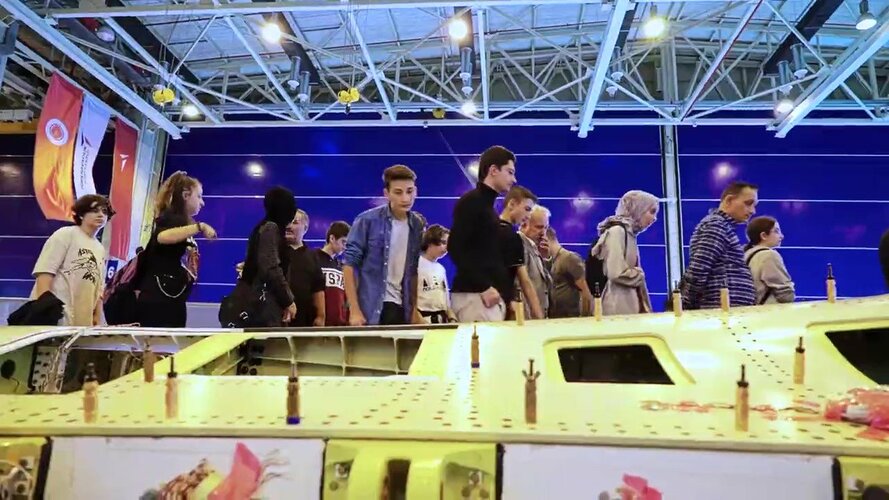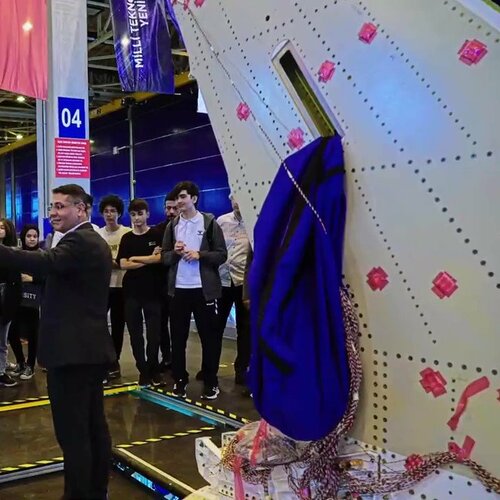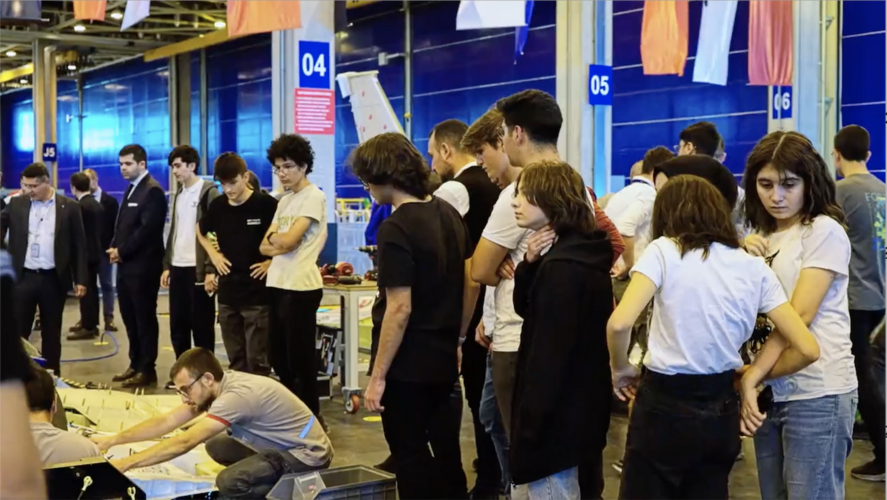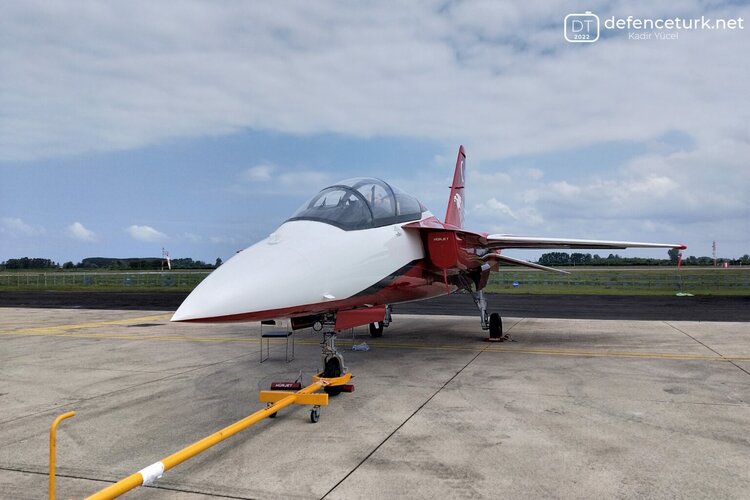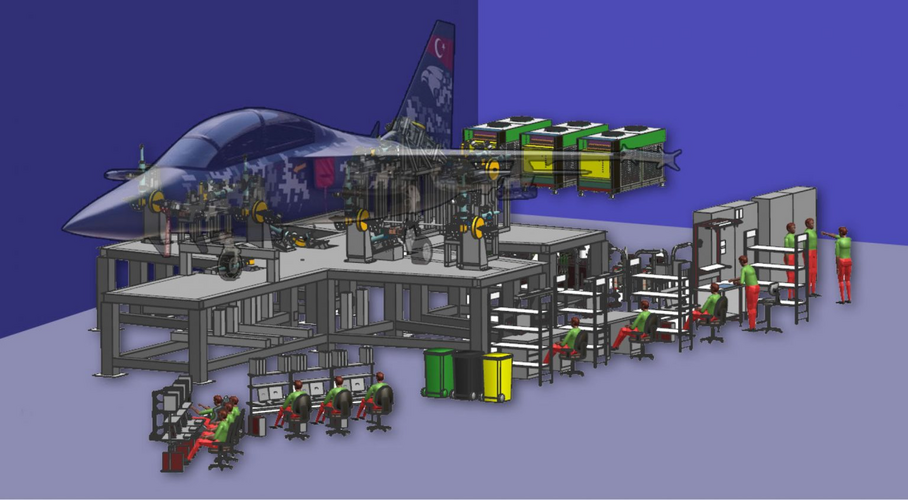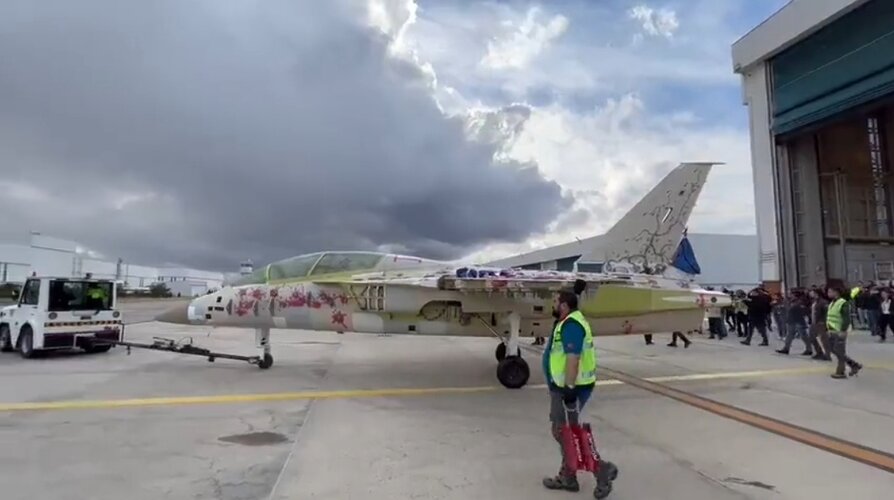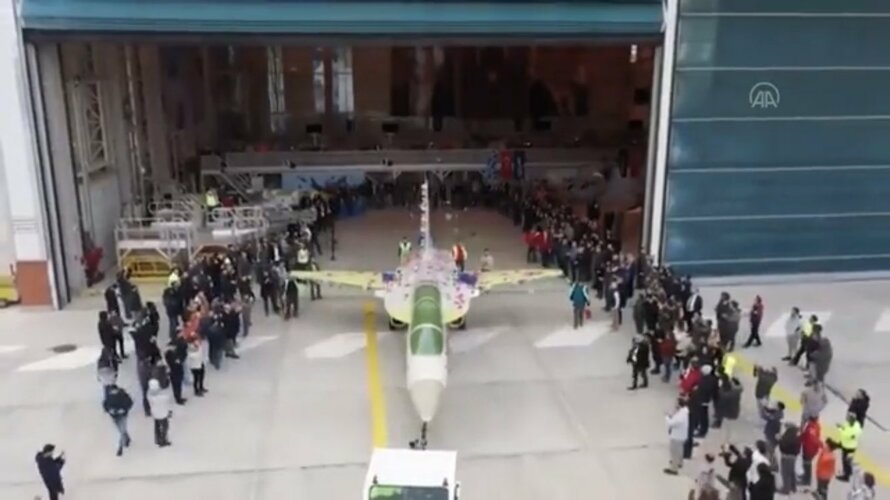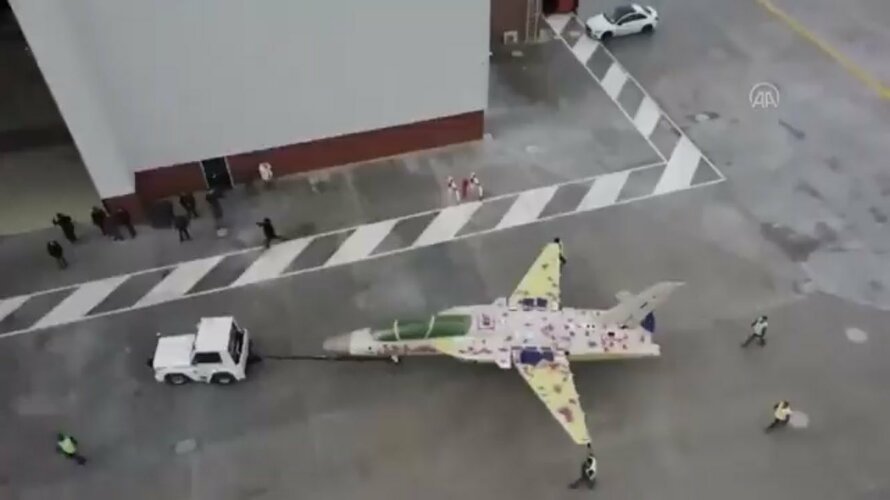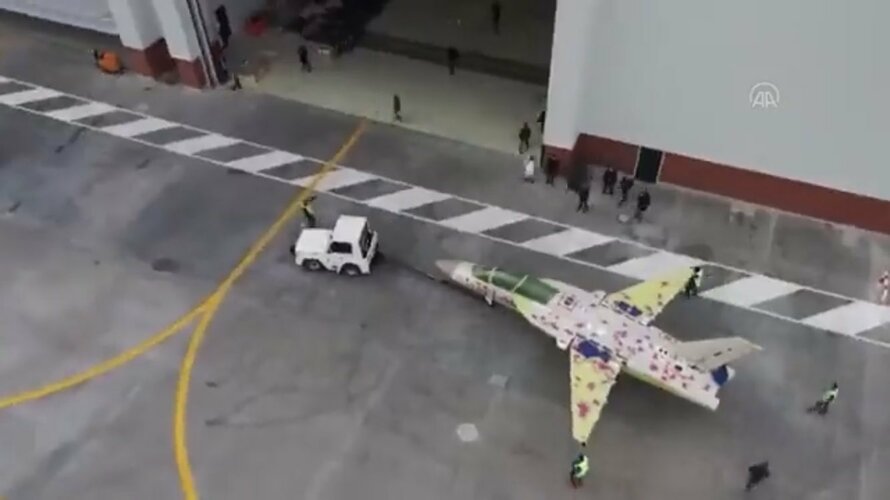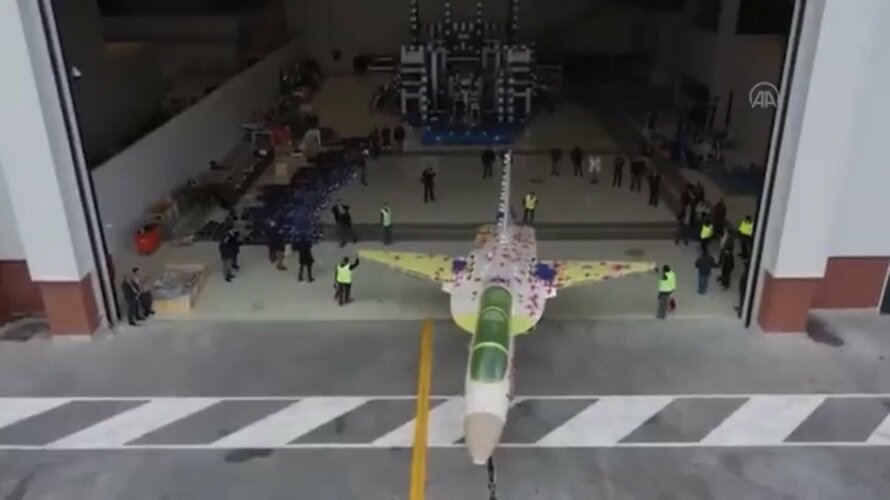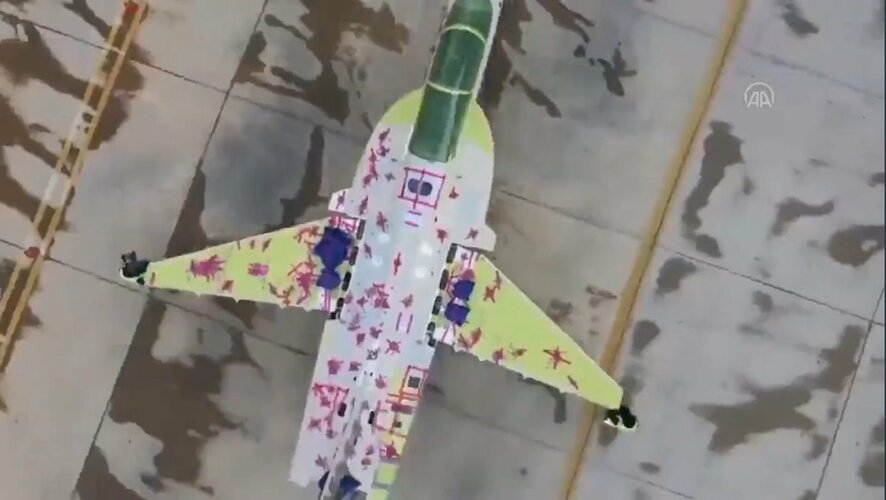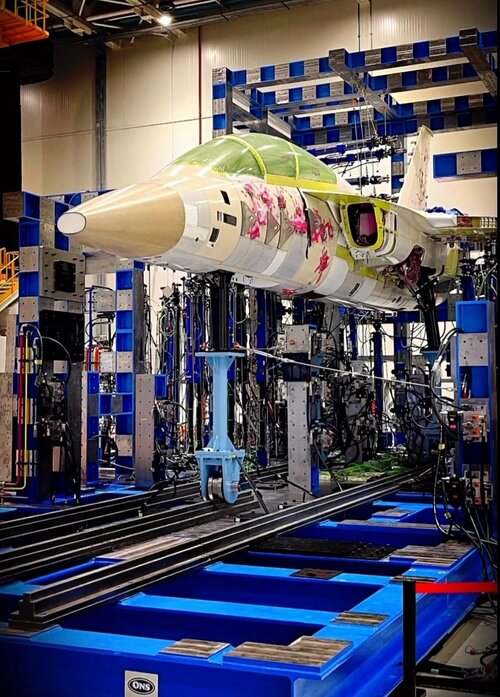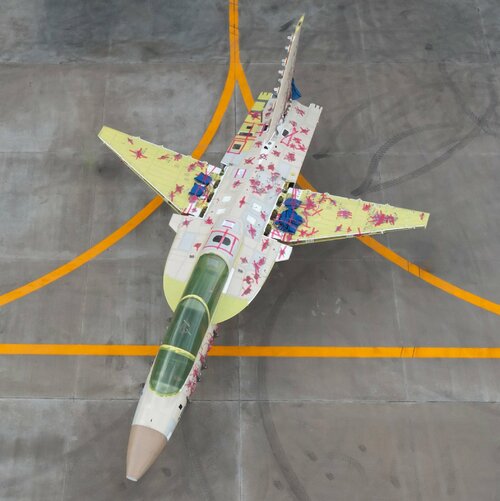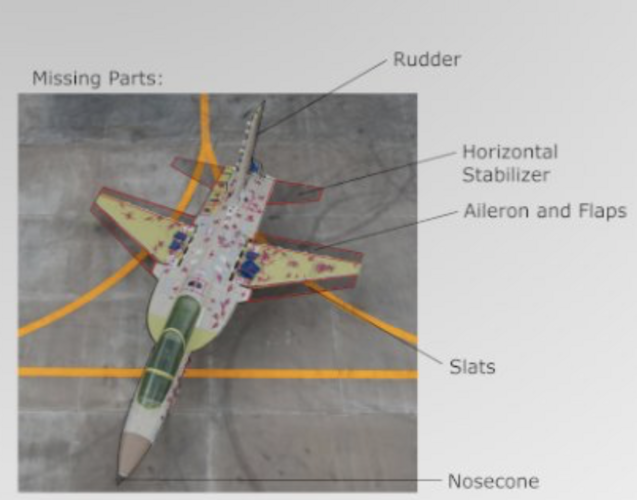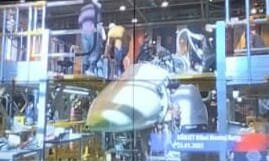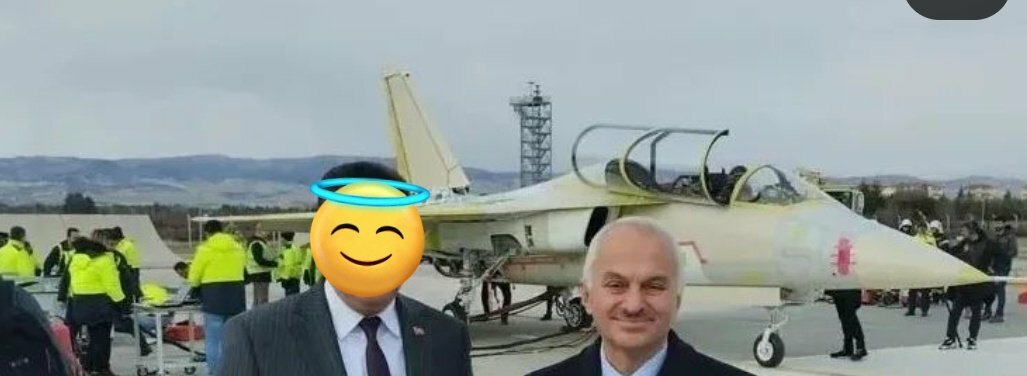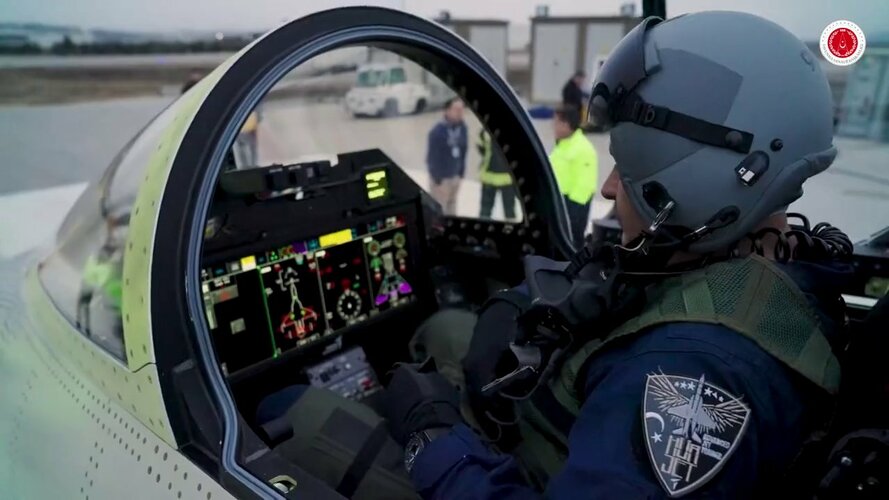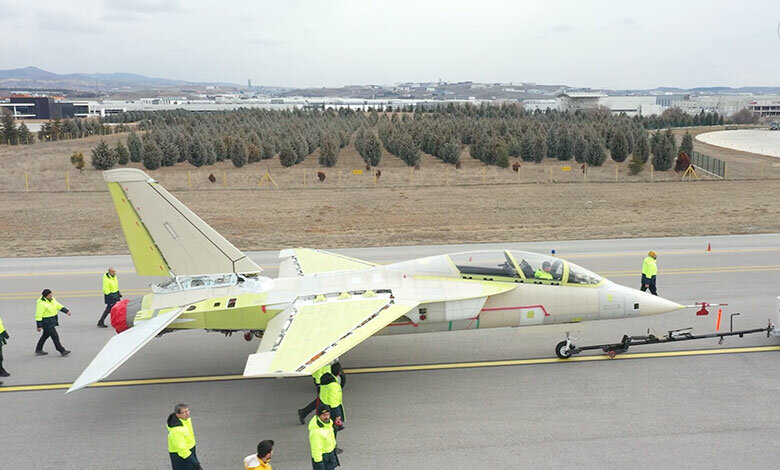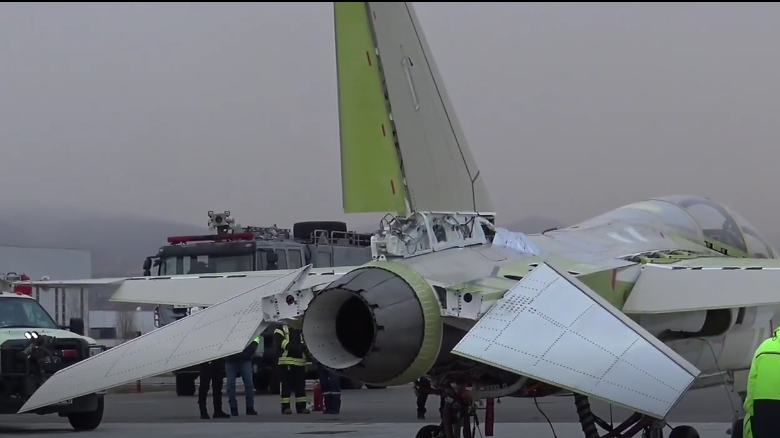You are using an out of date browser. It may not display this or other websites correctly.
You should upgrade or use an alternative browser.
You should upgrade or use an alternative browser.
TAI HURJET
- Thread starter ocay
- Start date
If I may, I am not a fan. The ICP position (as seen in most classic 4th Gen) restricts upward placement of vital tactical information on the one piece display. 2 MFD would have offered better upward vision access of information by being aside of the ICP.
IMOHO, they should reposition the ICP side way, on the lower left canopy frame for example and move upward the screen. That way, accessing tactical information will be much easier, helping the pilots to keep their head up building SA.
Cockpit ergonomy is not defined according to what takes place in a Vienna Opera house... As an Engineer, you don't have to behave according to traditions:

IMOHO, they should reposition the ICP side way, on the lower left canopy frame for example and move upward the screen. That way, accessing tactical information will be much easier, helping the pilots to keep their head up building SA.
Cockpit ergonomy is not defined according to what takes place in a Vienna Opera house... As an Engineer, you don't have to behave according to traditions:

Last edited:
What you're saying makes sense. I agree to an extent. Opening up space in order to lift the main display upwards would probably aid with the pilot's situational awareness. However I don't think it's as bad as some people think. I've sat in that cockpit before. The vision isn't really restricted due to the classically placed ICP, you can see everything on the screen.If I may, I am not a fan. The ICP position (as seen in most classic 4th Gen) restricts upward placement of vital tactical information on the one piece display. 2 MFD would have offered better upward vision access of information by being aside of the ICP.
IMOHO, they should reposition the ICP side way, on the lower left canopy frame for example and move upward the screen. That way, accessing tactical information will be much easier, helping the pilots to keep their head up building SA.
Cockpit ergonomy is not defined according to what takes place in a Vienna Opera house... As an Engineer, you don't have to behave according to traditions:

- Joined
- 15 July 2020
- Messages
- 1,476
- Reaction score
- 4,535
According to the information shared at the Farnborough International Aviation Show 2022, the first prototype (P1) aircraft, which is under production within the scope of the HÜRJET Program, will perform the first flight in December 2022, the second prototype (P2) will perform it's first flight on March 18, 2023.
View: https://twitter.com/BRAHMSNNETC1/status/1551950288197763072
View: https://twitter.com/BRAHMSNNETC1/status/1551950288197763072
RavenOne
ACCESS: Top Secret
- Joined
- 18 June 2008
- Messages
- 1,001
- Reaction score
- 2,670
Saw the mock up fortnight ago at Farnborough air show so here are my photos from being a guest at their chalet.
Cheers
Cheers
Attachments
- Joined
- 15 July 2020
- Messages
- 1,476
- Reaction score
- 4,535
King of Malaysia, Sultan Abdullah Riayatuddin visited Turkish Aerospace Industries, during tour of Hurjet assembly facility - he signed and dated a composite panel which was then installed on the first prototype Hurjet Trainer Aircraft. Hurjet is in Malay Trainer aircraft / light attack aircraft tender with Turkey offering very generous offset/tech transfer package/production and sales license of Hurjet in Asian Region



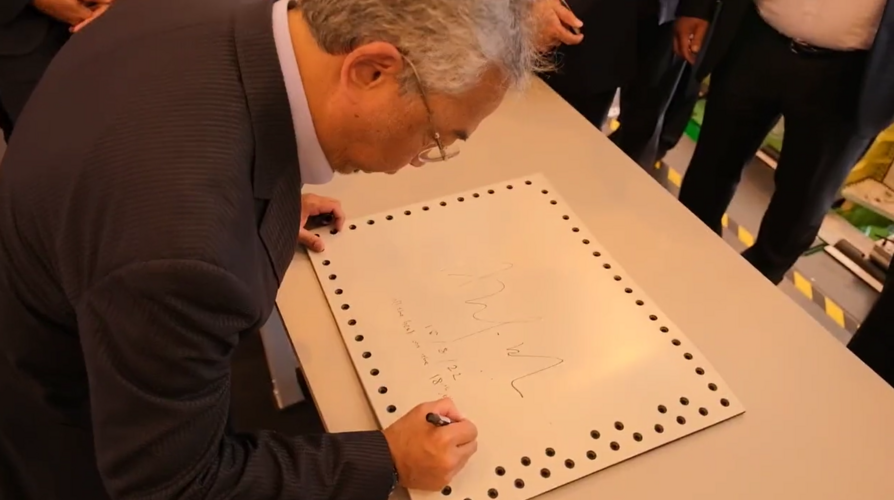
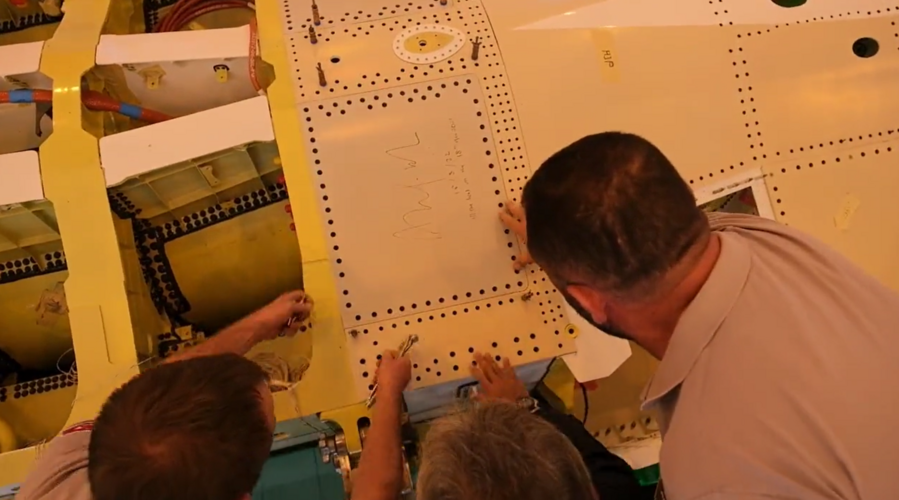
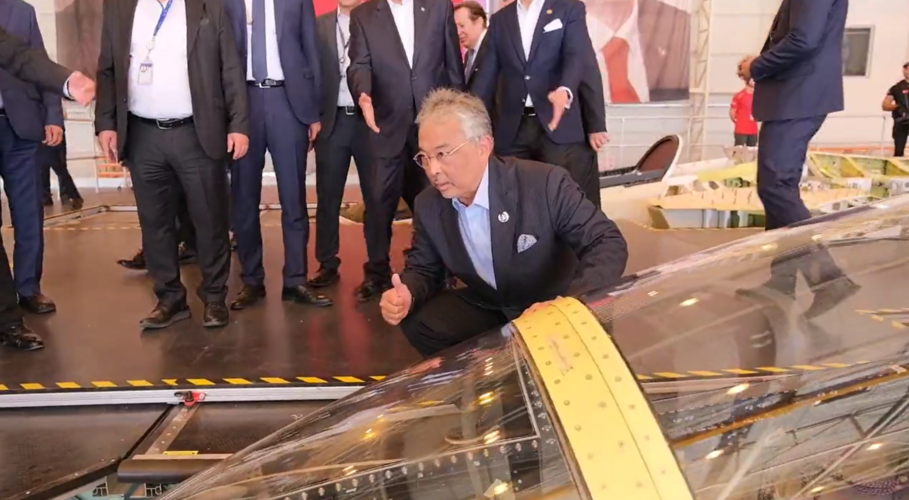
TAI has opened a fuel testing facility for HÜRJET.
TAI established the test facility designed with national resources to perform the tests of HURJET's fuel systems. Thus, the fuel system of Turkey's first jet trainer HÜRJET will be safely flown and tested on the ground before the first flight.
In tests to be carried out with HURJET's one-to-one fuel tanks and fuel system; Fuel transfer, filling/discharging, engine feeding and ventilation systems and sealing processes in the aircraft will be tested at this facility. With the experience gained from this facility, which will remain in operation for the life of HÜRJET, work has also begun to establish a new facility where the fuel systems of the National Combat Aircraft will also be tested. The company will also contribute to the design improvements of the platforms as a result of the test data it will obtain from these facilities.
With the facility, which will provide advantages in terms of time and finance, Turkish Aerospace Industries, which gave the company the ability to test aircraft fuel systems, has also developed one of the world's leading facilities in its field with domestic and national resources. Along with the test data to be obtained here, it will be ensured that the aircraft design data remain in our country.



TAI established the test facility designed with national resources to perform the tests of HURJET's fuel systems. Thus, the fuel system of Turkey's first jet trainer HÜRJET will be safely flown and tested on the ground before the first flight.
In tests to be carried out with HURJET's one-to-one fuel tanks and fuel system; Fuel transfer, filling/discharging, engine feeding and ventilation systems and sealing processes in the aircraft will be tested at this facility. With the experience gained from this facility, which will remain in operation for the life of HÜRJET, work has also begun to establish a new facility where the fuel systems of the National Combat Aircraft will also be tested. The company will also contribute to the design improvements of the platforms as a result of the test data it will obtain from these facilities.
With the facility, which will provide advantages in terms of time and finance, Turkish Aerospace Industries, which gave the company the ability to test aircraft fuel systems, has also developed one of the world's leading facilities in its field with domestic and national resources. Along with the test data to be obtained here, it will be ensured that the aircraft design data remain in our country.
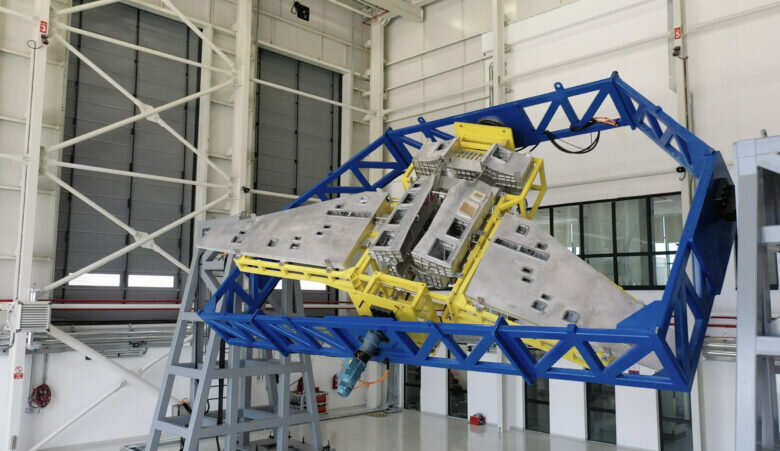
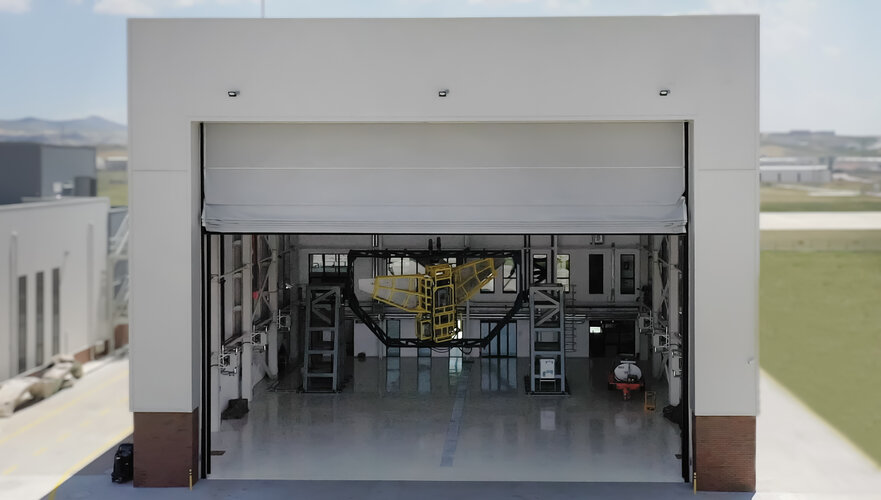

- Joined
- 15 July 2020
- Messages
- 1,476
- Reaction score
- 4,535
TAI has opened a fuel testing facility for HÜRJET.
TAI established the test facility designed with national resources to perform the tests of HURJET's fuel systems. Thus, the fuel system of Turkey's first jet trainer HÜRJET will be safely flown and tested on the ground before the first flight.
In tests to be carried out with HURJET's one-to-one fuel tanks and fuel system; Fuel transfer, filling/discharging, engine feeding and ventilation systems and sealing processes in the aircraft will be tested at this facility. With the experience gained from this facility, which will remain in operation for the life of HÜRJET, work has also begun to establish a new facility where the fuel systems of the National Combat Aircraft will also be tested. The company will also contribute to the design improvements of the platforms as a result of the test data it will obtain from these facilities.
With the facility, which will provide advantages in terms of time and finance, Turkish Aerospace Industries, which gave the company the ability to test aircraft fuel systems, has also developed one of the world's leading facilities in its field with domestic and national resources. Along with the test data to be obtained here, it will be ensured that the aircraft design data remain in our country.
View attachment 686008
View attachment 686009
View attachment 686010
That's a lot of fuel tanks, what's the range of Hurjet compared with it's peers ?
- Joined
- 27 December 2005
- Messages
- 17,712
- Reaction score
- 26,174
Moved to Aviation and Space - this is no longer a 'project'.
Aren't operators seated much too closely to the test jig? I mean, if something breaks, it does often releasing a considerable amount of energy in a kinetic form. Some are even seated under the wing tip, featured on the model, with a mounted missile!?!!
Don't read into it. It's a simple illustration. The real test jig (at least that's what I think it is) can be seen from the 5th photo I posted.Aren't operators seated much too closely to the test jig? I mean, if something breaks, it does often releasing a considerable amount of energy in a kinetic form. Some are even seated under the wing tip, featured on the model, with a mounted missile!?!!
- Joined
- 15 July 2020
- Messages
- 1,476
- Reaction score
- 4,535
I don't see any refuelling receptacles on this prototype, that was one of the leading features of Hurjet compared to the competition, hopefully it will be worked into future prototypes.
I just thought what Miguyan did was interesting so I posted it here.It's a structural test rig. It doesn't need ailerons, slats etc...you airframe is not going to rely on it for that purpose.

snne
ACCESS: Top Secret
- Joined
- 3 July 2022
- Messages
- 1,385
- Reaction score
- 4,490
View: https://twitter.com/KRCBEY28/status/1612733246558863360?t=_8ZrzwZZrQYzCcqnygDS4Q&s=19TUSAŞ General Manager @Temel_Kotil said that one of Hürjet prototypes is undergoing mechanical testing and that the flying prototype is on its landing gears.
https://twitter.com/KRCBEY28/status/1612733246558863360?t=_8ZrzwZZrQYzCcqnygDS4Q&s=19
- Joined
- 15 July 2020
- Messages
- 1,476
- Reaction score
- 4,535
Something's going on... Maybe it's the first engine ignition test or something?
View attachment 692343
With the fire safety crew off to the side, I'd say it's safe to presume that an engine start test was taken place
Newly released video of Hürjet's engine ignition test
View: https://twitter.com/SavunmaSanayiST/status/1621059858312171521?s=20&t=Nt9jvSQbWufPCzdz68Sz5Q
View: https://twitter.com/SavunmaSanayiST/status/1621059858312171521?s=20&t=Nt9jvSQbWufPCzdz68Sz5Q
Similar threads
-
-
-
Turkey's HAVA SOJ dedicated electronic warfare aircraft
- Started by Combat-Master
- Replies: 11
-
Design Challenge: Loyal Wingman / Advanced Trainer / Light Combat Aircraft
- Started by H_K
- Replies: 50
-
TOPICS: American trainer competitions
- Started by Stargazer
- Replies: 1

